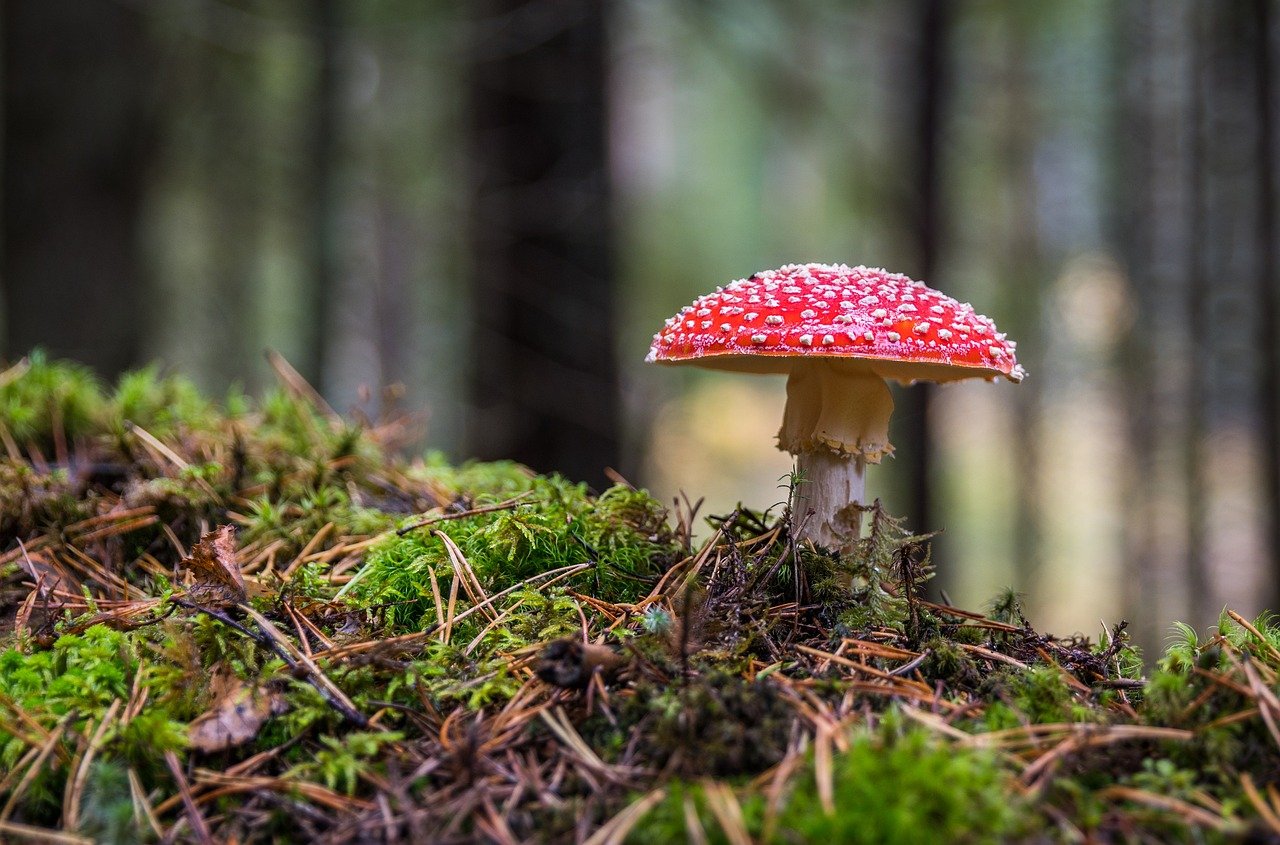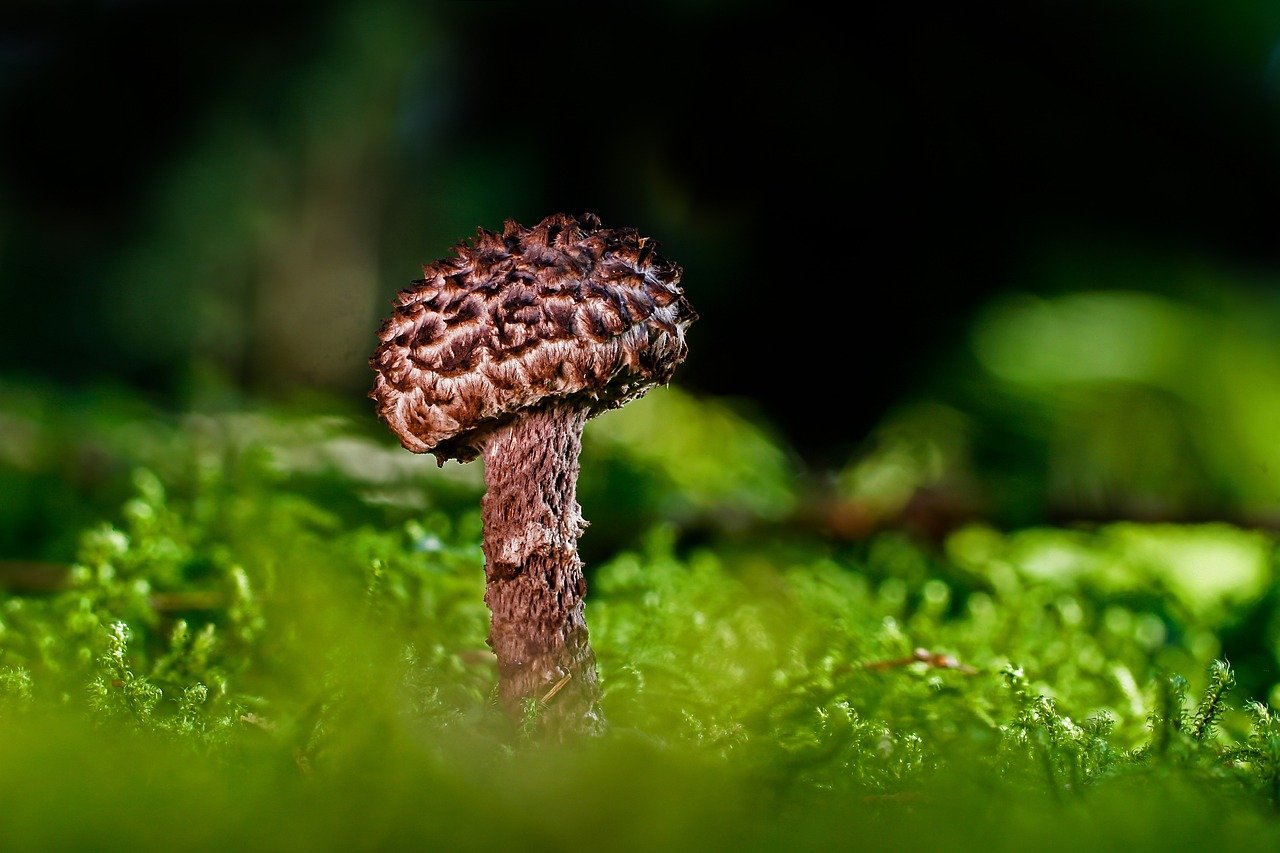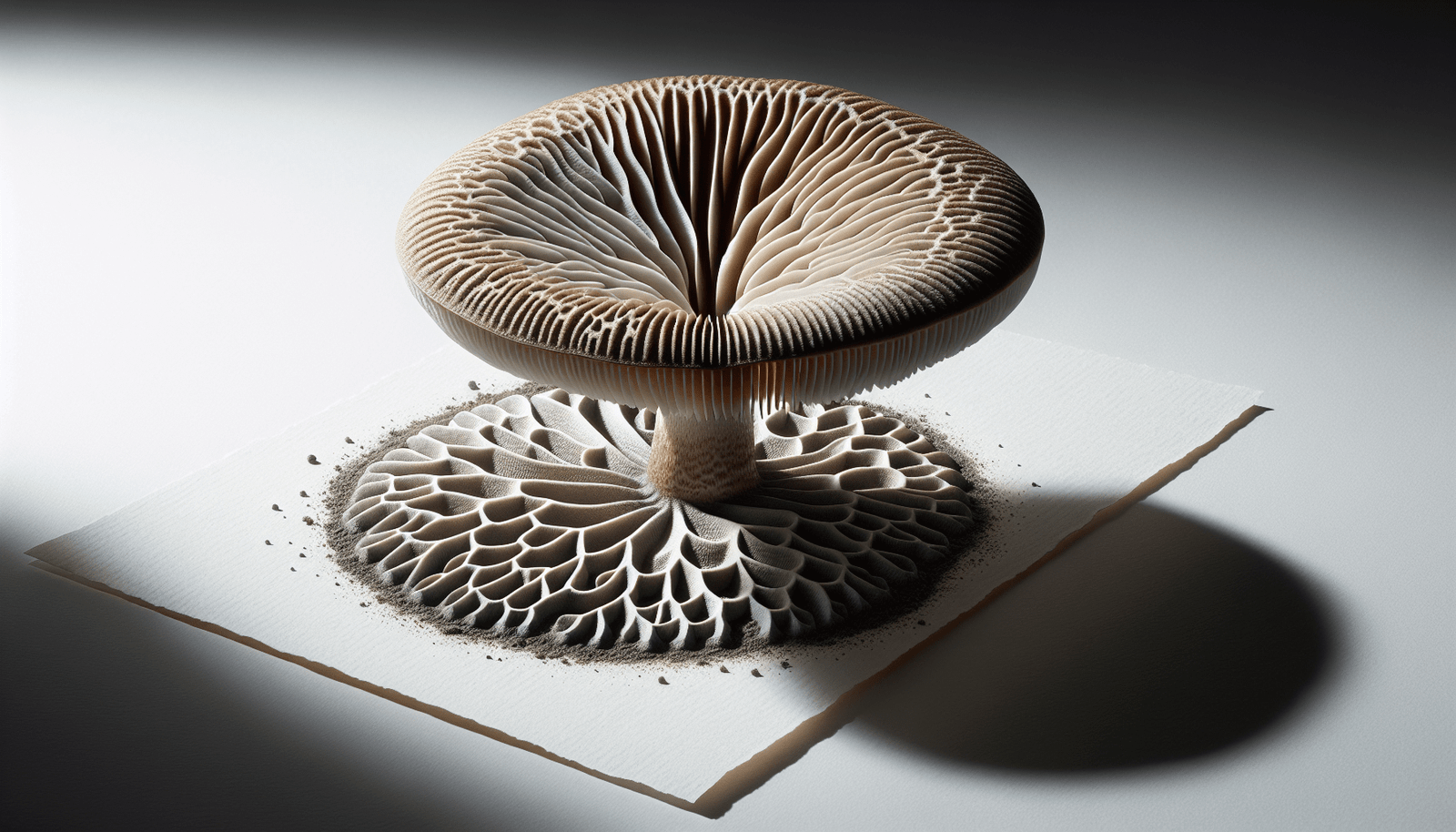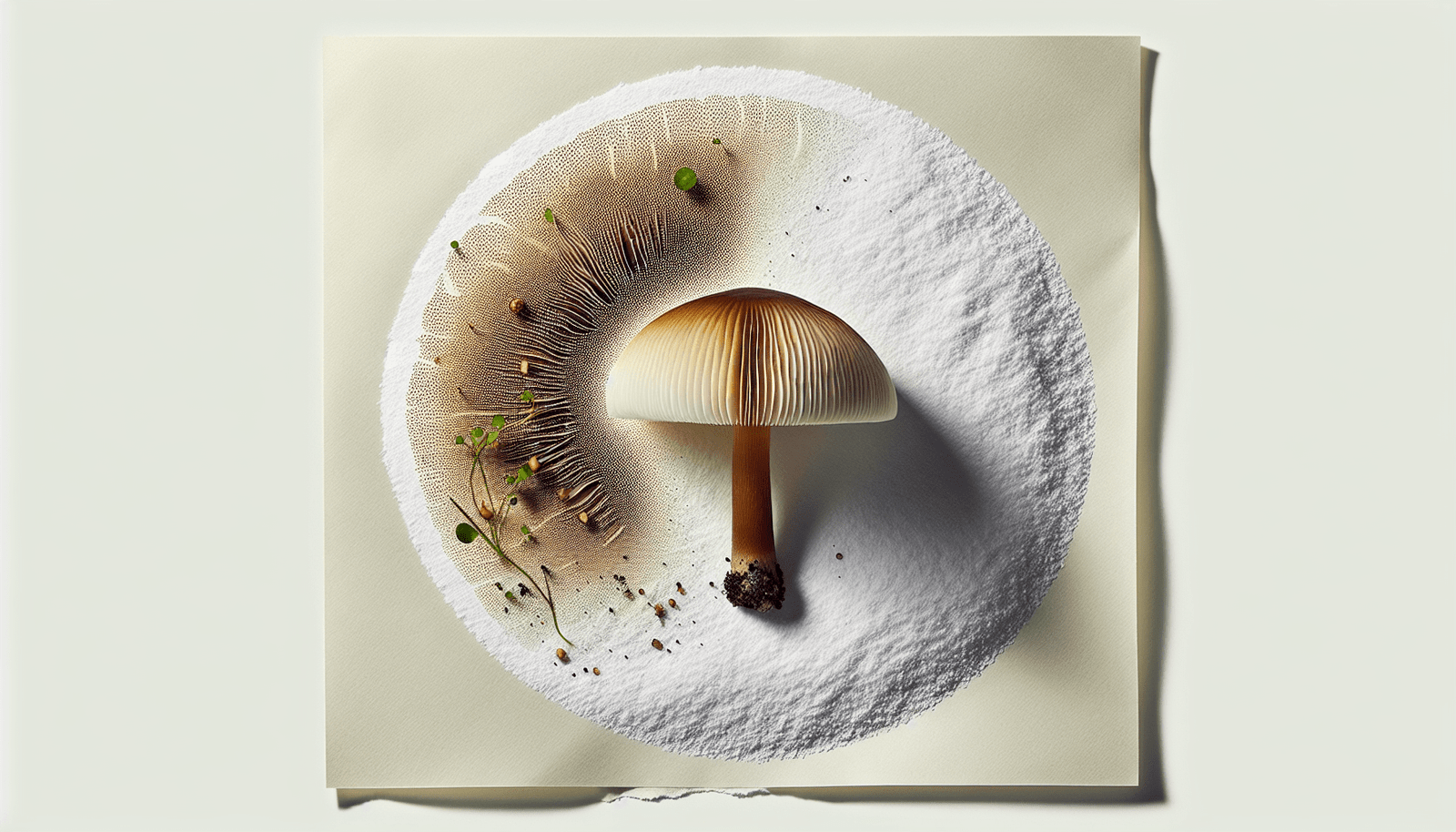What does a mushroom spore print tell you? Have you ever stumbled upon a mushroom during your nature walks and wondered exactly what kind it is? Maybe you’ve marveled at the diverse shapes and colors of these fungi and pondered how mycologists (mushroom enthusiasts and scientists) tell them apart. One of the fascinating techniques used in mushroom identification is creating and analyzing a spore print.
What is a Mushroom Spore Print?
A mushroom spore print is essentially an imprint of the spores that a mushroom’s gills, pores, or teeth produce. When you place the cap of a mature mushroom on a surface with its spore-producing side down, the spores fall out and form a pattern that mirrors the structure of the mushroom’s gills or pores. This pattern, along with the color of the spores, provides crucial information.
How to Make a Mushroom Spore Print
Creating a spore print is a fun and straightforward process. Here’s a step-by-step guide:
- Select a Mature Mushroom: Ensure the mushroom is mature and its gills or pores are open.
- Place the Cap on Paper: Remove the stem and place the cap gill-side down on a sheet of white or black paper.
- Cover with a Bowl: Place a bowl over the mushroom cap to create a humid environment and prevent spores from flying away.
- Wait: Leave it for several hours or overnight.
- Remove the Cap: Carefully lift the cap to reveal the spore pattern on the paper.
Interpreting the Spore Print
The spore print gives you two significant pieces of information: the spore color and the pattern.
Spore Color
Spore color can range from white to black, with various shades in between, such as yellow, pink, brown, and purple. The color helps narrow down the species since different mushrooms produce different colored spores.
Spore Pattern
The pattern of the spore print mirrors the gill or pore arrangement of the mushroom. This can also aid in identification, especially when combined with other features like cap shape, stem characteristics, and habitat.
Why is Spore Print Important?
A spore print is vital because it is one of the few definitive ways to identify a mushroom species accurately. Visual identification based on cap and stem features alone can be misleading since many mushrooms look alike. Spore prints provide additional, reliable criteria.

What Can You Learn from a Spore Print?
Identifying Edibility
Some mushrooms that look similar can be drastically different in terms of edibility. For instance, some mushrooms are toxic and can resemble edible ones. A spore print can help you distinguish them.
Verifying Mushroom Species
Mycologists use spore prints to verify species. For example, if two mushrooms appear similar but have different colored spores, they are likely different species.
Understanding Fungal Ecology
Spore prints can even give insight into the ecological role of a mushroom. Certain fungi are only found in specific environments or are part of unique symbiotic relationships with plants.
Common Spore Print Colors and Their Implications
Here is a handy table showing common spore print colors and what they might indicate about the mushroom:
| Spore Print Color | Possible Mushroom Families | Example Species |
|---|---|---|
| White | Amanita, Russula, Lactarius | Amanita muscaria, Russula emetica |
| Black | Coprinus, Panaeolus | Coprinus comatus, Panaeolus cinctulus |
| Brown | Agaricus, Psathyrella, Galerina | Agaricus bisporus, Psathyrella candolleana |
| Yellow | Pluteus, Gymnopilus | Pluteus cervinus, Gymnopilus spectabilis |
| Pink | Entoloma, Pluteus | Entoloma sinuatum, Pluteus salicinus |
| Purple-Brown | Cortinarius, Hypholoma | Cortinarius violaceus, Hypholoma capnoides |

How to Document and Identify with Spore Prints
To use spore prints effectively, combine them with other identification methods. When you document a mushroom, consider the following:
Mushroom Appearance
- Cap Shape and Color: Note changes as the mushroom matures.
- Gill Attachment and Color: Check if they are free, attached, or decurrent (running down the stem).
- Stem Characteristics: Look at shape, color, and presence of a ring or volva.
Habitat
- Environment: Is it growing on wood, soil, or leaf litter?
- Climate: Consider the season and weather conditions.
Observational Tools
Use a hand lens or microscope to examine:
- Gill Spacing: Crowded or widely spaced.
- Spore Shape and Size: These microscopic features can be definitive.
Advanced Techniques: Microscopy
Microscopy can reveal intricate details about the spores that are invisible to the naked eye. Experts often use microscopes to:
- Measure Spore Dimensions: Length and width.
- Observe Spore Ornamentation: Surface texture and patterns.

Safety Precautions
Handling and identifying mushrooms require care. Some tips include:
Avoiding Toxic Mushrooms
Never consume a wild mushroom unless you are 100% sure of its identity. Even experienced foragers can make mistakes.
Using Gloves
When handling unknown mushrooms, wear gloves, especially if you suspect they might be toxic.
Cleaning Surfaces
After making spore prints, clean your surfaces to avoid any potential contact with toxic spores.
Apps and Online Resources
Several apps and websites can assist you in identifying mushroom species based on spore prints and other characteristics. Here are a few:
- MycoVision: A comprehensive identification tool.
- Mushroom Observer: A community-driven site for sharing observations.
- Shroomify: An app that simplifies mushroom identification.

Learning and Joining Communities
Engage with local mycological societies and online forums where enthusiasts share their findings and knowledge. These communities can be a treasure trove of information and support.
Suggested Communities
- North American Mycological Association (NAMA): Offers resources and local club memberships.
- Reddit: r/mycology: A subreddit dedicated to mushroom enthusiasts.
Common Misconceptions
All White-Spored Mushrooms are Safe
This is untrue. Some deadly poisonous mushrooms, like Amanita species, have white spores.
Spore Color Alone is Enough
No single characteristic should be solely relied upon for identification. Always consider the overall picture.

Conclusion
A mushroom spore print is an invaluable tool in the fascinating realm of mycology. It offers a glimpse into the hidden world of spores, helping you unravel the mysteries of mushroom species, their ecology, and even their edibility. By combining spore print analysis with other identification methods, you can enhance your ability to accurately and safely explore the diverse world of fungi. Each spore print tells a story, a tiny but significant chapter in the grand narrative of nature. Happy identifying!
